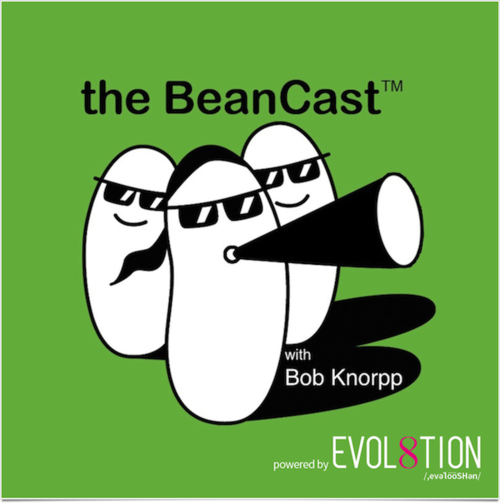 If you want to stay current on big tech issues impacting marketing and advertising by listening instead of reading, and you want multiple perspectives on from people in the trade, check out the BeanCast.
If you want to stay current on big tech issues impacting marketing and advertising by listening instead of reading, and you want multiple perspectives on from people in the trade, check out the BeanCast.
It’s an audio podcast recorded every Sunday by Bob Knorpp (He runs The Cool Beans Group and his clients include Visa, FX, and Activision) and it’s one of my regular listens. Bob produces top notch panel discussions so you can catch up on what’s happening with your ears instead of your eyes and listen while you commute, exercise or do mindless busy work. I’m on this week ‘s show (Episode 286) with a bunch of really smart advertising and social media marketing pros discussing the Target security breach, IBM Big Data’s sponsorship of the Australian Open, EA and Microsoft astroturfing with paid posts, respecting the FTC’s Dotcom Disclosure Guidelines, Facebook’s sophomoric response to the new Princeton research predicting the site’s demise and the MacIntosh 30-year Anniversary Celebration. Reference links below. [audio: http://beancast.evanbooth.com/
Instead of flagging the disclaimer within the video player where it would be more likely seen, those notices will appear in the videos’ descriptions that appear underneath the player and can be easily overlooked (check out this example from the campaign). For example, if a video is embedded on a site outside of YouTube, the notice would only be viewed by clicking a button in the top-right corner of the video player. (AdAge)
As a point of clarification, you should know that disclosures are required in audio, video, photographs and graphics, just like they are in the printed word with the same condition that they are clear, close to the endorsement, and easy to see. So a text disclosure that doesn’t accompany an image that get’s posted on Pinterest would not comploy with the FTC’s dotcom disclosure guidelines. Disclosure messages also need to be presented in an adequate volume and be long enough in duration to be comprehensible. If you want to make sure you’re compliant with the Federal Trade Commission’s DotCom Disclosure Guidelines, here a FREE pass to our online, self-paced Social Media Disclosure & Transparency Training Course.
Topics
Transactional Trust Sources: Ad Age on trust in Amazon, BI on Google’s shopping play Sports Sponsorships Sources: Ad Age looks at value, Ad Age on engagement Paying for Earned Media Sources: Forbes on the EA story, Ad Age on the XBOX story, GigaOm reports Facebook’s Research War Sources: WSJ reports, Facebook’s research, Engadget reports Mac at 30 Sources: Ad Age looks back
Sponsors
Squarespace – the all-in-one platform that makes it easy to create your own website. For a free trial and 10% off, go to squarespace.com and use offer code BeanCast1. Thanks to Recursive Squirrel for bandwidth and Email Transmit for our newsletter service. Also thanks to Craig Jacks for providing music for The BeanCast.